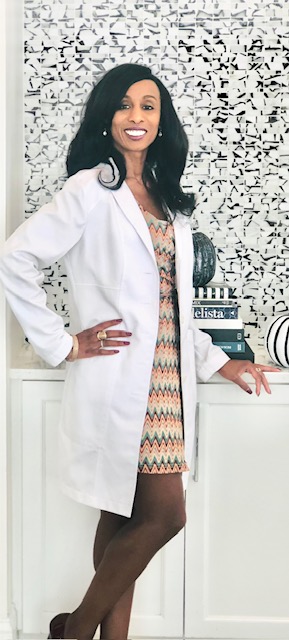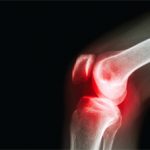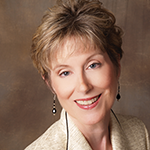 Magdalena “Maggie” Cadet, MD, a rheumatologist in New York City, remembers learning about the relationship between physical activity and bone health at a young age. She was 5 years old when she first began taking ballet, jazz and tap-dancing lessons. At 9, she became a competitive figure skater and practiced both dance and ice skating until she began college at Georgetown University, Washington, D.C.
Magdalena “Maggie” Cadet, MD, a rheumatologist in New York City, remembers learning about the relationship between physical activity and bone health at a young age. She was 5 years old when she first began taking ballet, jazz and tap-dancing lessons. At 9, she became a competitive figure skater and practiced both dance and ice skating until she began college at Georgetown University, Washington, D.C.
“As a figure skater, I was amazed by how the different muscle groups, bones, tendons and ligaments allowed me to attempt new spins and jumps,” she says. “Through sports and activities, I realized the importance of maintaining good health and taking care of my bones and joints.”
Dr. Cadet continued competitive skating for 10 years, but at one point she sustained a hairline pelvic fracture while performing. The injury sidelined her skating career for a few months, but it also sparked her interest in bone and musculoskeletal diseases.
“When I started college at Georgetown, I needed a new way to stay physically active,” Dr. Cadet says. “I didn’t just put on the freshman 15, I put on the freshman 30.”
Dr. Cadet discovered running and noticed a positive change in her mood and overall health. She lost the extra pounds and felt good knowing she was keeping her joints flexible and strong, while also working to reduce her risk factors for heart disease. Today, she is a competitive runner and recently completed her eighth half marathon.
“My parents are Haitian, and enjoying delicious Caribbean dishes is an important aspect of our culture and family,” she says. “But I also know heart disease is prevalent in Black Americans, so I work to balance eating healthy with regular exercise and encourage my patients to do the same.”
Encouraging Patients to Be Proactive
Today, as a New York City-based rheumatologist, Dr. Cadet works to raise awareness of autoimmune conditions, arthritis and other rheumatic diseases that disproportionately affect women and minority communities. She draws from her own background as an athlete to encourage her patients to take care of their bodies and remain active.

Dr. Cadet
“My first encounter with someone who had lupus was during my residency at Yale New Haven Hospital [in Connecticut] and then [with] other women affected by the disease,” she says. “During my residency, I met a special young African American woman who presented with a rash, chronic abdominal pain, body aches, vague chest pain and severe fatigue.”
Although the young woman had experienced these symptoms for years, she had never been accurately diagnosed or educated on the complexities of the disease.
“She didn’t know about lupus comorbidities, such as heart disease, lung disease and kidney damage, that can occur if early and aggressive treatment isn’t initiated to control disease activity,” Dr. Cadet says. “She was eventually prescribed steroids, but as a young female, she didn’t anticipate the side effects, such as acne, hair loss and weight gain.”
After seeing the patient die from cardiac complications of systemic lupus erythematosus (SLE), Dr. Cadet realized how little education and support exists for many people who suffer from these debilitating rheumatic diseases.
“Some people think arthritis and autoimmune diseases only affect the joints, and while this is part of it, these diseases can also affect the heart, kidneys, eyes and many other organs,” she says. “So it’s important for patients to know about potential complications that can occur if their condition isn’t treated properly and to become familiar with treatment options.”
Studies show that if rheumatic diseases are treated early, fewer complications may occur, resulting in a longer lifespan and better quality of life. Dr. Cadet believes these individuals need coordination of care by many different specialists to address the organ systems affected.
“In rheumatology, there’s a predominance of females being affected, and many are African American, Afro Caribbean, Hispanic and Asian,” Dr. Cadet says. “So many patients come to me after being misdiagnosed by their primary care or an [emergency department] physician.”
Education Is Key
In addition to educating her patients, Dr. Cadet believes it’s important to educate primary care and emergency department physicians on symptoms that warrant a referral to a rheumatologist for further evaluation.
“It’s important for doctors to note such symptoms as extreme fatigue, photosensitivity or early cardiac symptoms that may indicate an underlying autoimmune disease,” Dr. Cadet says. “They should also check bloodwork for a low white blood cell count that persists, low platelet counts, elevated inflammation markers, and protein and blood in the urine, to ensure patients with these symptoms are referred to a rheumatologist.”
Dr. Cadet believes in treating each patient holistically, educating them not only on the importance of adhering to a medication regimen, but also discussing how lifestyle changes can positively impact their diagnosis.
“I think it’s very important for patients to stay active,” she says. “I understand it can be difficult to exercise with muscle aches or joint pain, but studies show that increased physical activity, even 15–20 minutes a day of walking or stretching, can help with flexibility of the tendons and ligaments and also strengthen bones.”
Because low bone density is often seen in autoimmune diseases, including rheumatoid arthritis (RA) and lupus, and can lead to fractures, Dr. Cadet encourages her patients to do strengthening exercises and consider a gentle yoga practice.
“Yoga is really great because it enhances flexibility, builds core strength and helps with joint flexibility,” she says. “I don’t think a lot of patients realize that diseases like lupus, RA, and scleroderma, put them at an increased risk of cardiovascular disease and that regular exercise can lower their risk and help with hypertension, obesity and side effects of such medications as steroids.”
Dr. Cadet says it’s also important to recognize socioeconomic factors that might impact a patient’s ability to exercise regularly or eat healthy.
“Maybe they’re missing appointments because they have transportation or childcare issues,” she says. “I think it’s important for rheumatologists to understand that different patient populations often have unique obstacles to care, and it’s important to try and identify these challenges to ensure they’re getting good care.”
Realizing that many of her patients may live in areas that lack access to healthy food options, Dr. Cadet points to social platforms, such as Instagram, that feature physicians and nutritionists who offer guides to healthy eating.
“I tell my patients eating healthy can be as easy as making substitutions, eating a lean piece of chicken versus red meat or making a smoothie instead of indulging in a milkshake,” she says. “And if they can’t afford a gym membership, they can access many websites on their phone that offer free exercise classes. Walking around the neighborhood and getting 10,000 steps a day is free and works to increase physical activity.”
 Linda Childers is a health writer located in the San Francisco Bay Area.
Linda Childers is a health writer located in the San Francisco Bay Area.


